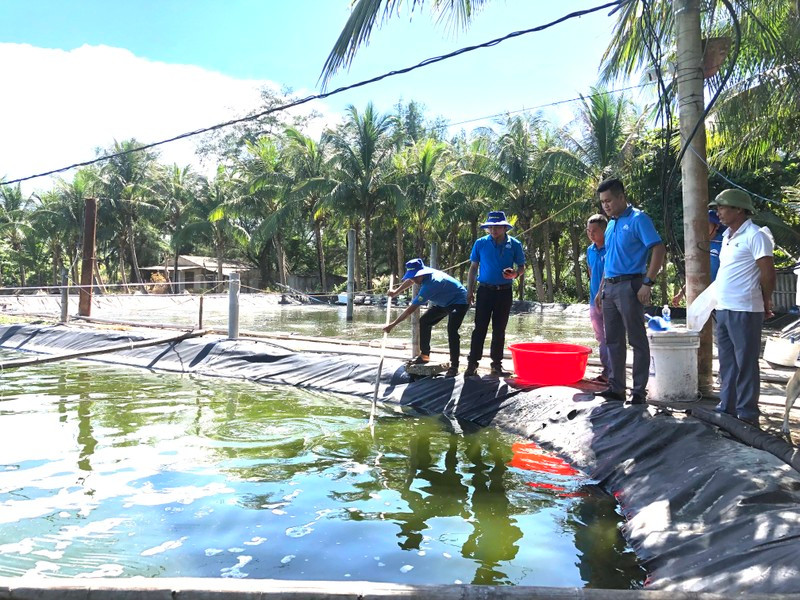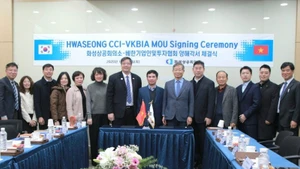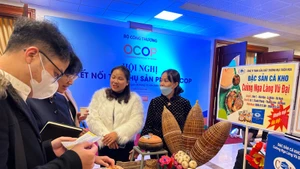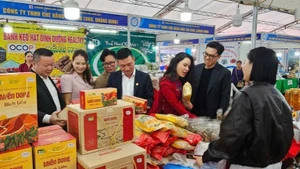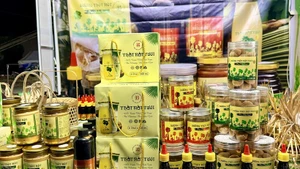Currently, Quang Binh Province is aiming to develop shrimp farming in the direction of applying high technology and intensive farming, and convert and upgrade improved extensive shrimp farming areas to semi-intensive and intensive farming.
According to the Fisheries Sub-Department of Quang Binh Province, the province has a coastline of 116.04 km, five estuaries flowing into the sea, more than 160 natural and artificial reservoirs with an area capable of developing aquaculture of 17,000 hectares.
In 2022, the whole province has stocked 1,480 hectares of brackish water shrimp with an output of 4,145 tonnes. The hatcheries have produced over 3.4 billion vannamei and 15 million black tiger shrimp.
Up to now, a number of farming areas have been invested in building relatively secure infrastructure to develop aquaculture in the form of intensive farming and high-tech farming such as: North-South shrimp farming area of Gianh River in the districts of Ha Trach, Dong Trach, My Trach, Bo Trach, Quang Chau, and Quang Trach; and the shrimp farming area on sand in Ngu Thuy Bac Commune, Le Thuy District; Hai Ninh, Quang Ninh District; etc.
According to Director of the Department of Agriculture and Rural Development of Quang Binh Province Mai Van Minh, the province is currently identifying high-tech and organic aquaculture for development, especially exploiting and making good use of natural water surface to grow environmentally friendly aquatic products, ensuring quality for consumers.
Currently, aquaculture models in general and shrimp farming in particular are earning hundreds of millions of VND per hectare.
In order to connect enterprises providing technology solutions with production facilities and shrimp farmers, the National Agricultural Extension Centre has cooperated with Grobest Vietnam Company to deploy Grofarm, a high-tech shrimp farming model in Hai Ninh Commune, Quang Ninh District.
According to the assessment, the high-tech shrimp farming model has helped change the production mindset for people in boldly applying new scientific and technical advances. In addition, people can master science and technology, effectively applying in production to help reduce negative impacts on the environment and disease risks towards safe and sustainable aquaculture.
However, at present, shrimp farming in Quang Binh is facing difficulties because some concentrated shrimp farming areas do not have detailed planning and sedimentation ponds, wastewater treatment ponds and separate water supply and drainage systems.
Infrastructure in some farming areas is degraded, so it is easy to pollute the environment and spread diseases. Meanwhile, the product consumption market is precarious, the purchasing price is not stable, the phenomenon of traders forcing prices to make profit still occurs.
In order for brackish water shrimp farming to develop sustainably, according to the Fisheries Sub-Department of Quang Binh province, in the coming time, it is necessary to encourage and mobilise people to accumulate, concentrate on water surface, and invest in synchronous shrimp farming facilities to apply new science and technology; review, plan and re-plan shrimp farming areas in the direction of identifying areas with favourable natural conditions to focus on developing high-tech shrimp farming and intensive farming; and convert and upgrade improved extensive shrimp farming areas to semi-intensive and intensive farming.
At the same time, it is necessary to plan a number of coastal sandy areas to develop ecological shrimp farming areas combined with eco-tourism areas; promote the application and transfer of science and technology, new farming technical solutions (biotechnological farming, two-stage shrimp farming, recirculating culture with little water change...) in order to improve productivity and output and quality of shrimp products; regularly update information on domestic and foreign markets on consumer demand, product categories, etc. so that organisations and individuals can actively adjust farming activities and limit losses in production.
More attention should also be paid to promote trade, expand the market for shrimp products and encourage all economic sectors to invest in building shrimp processing factories for export as well as freezer warehouses to store and preserve products to ensure stable output, especially at the time of the harvest season.
